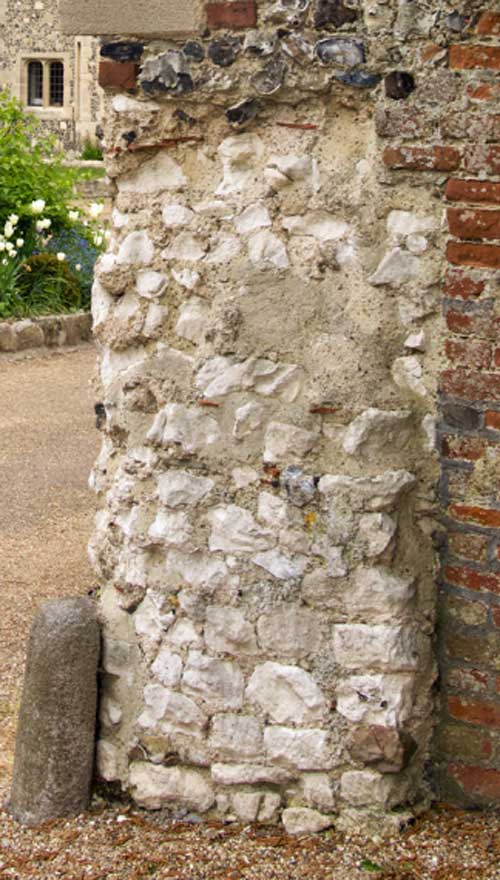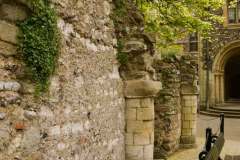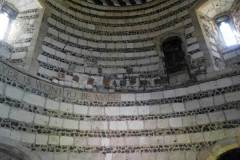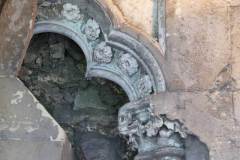Basics
Geology: limestone
Rock unit: Chalk Group
Age: Upper Cretaceous
Provenance: Canterbury district
Where to see examples
wall near entry to Archbishop’s Palace (adjacent image)
surviving vaults of the dormitory undercroft (image 1 further below)
in the Bastion Chapel (image 2 further below)
either side of the Chapter House entrance door (image 3 further below)

Description
Chalk is an almost pure form of calcium carbonate and can be described as a white limestone. It is composed mainly from the remains of countless calcite plates of planktonic, marine algae called coccoliths. These microscopic fragments that rained down on the sea floor to eventually form sediments several hundred metres thick. The Chalk seas were to last for some 35 million years. Even so the rates of sedimentation were extremely slow, maybe as little as one centimetre every thousand years. Today the Chalk cliffs of Kent provide some of the most distinctive coastal scenery in Britain.
Chalk lies below Canterbury and to the south of the city. It is generally not a good building stone, as it is mechanically weak and prone to rapid dissolution. However, Chalk has been used as a building stone where it is out of direct contact with the atmosphere. The rock can be found crushed and broken-up in the foundations of the cathedral to help form a level platform on which to start construction and also within the rubble core of several walls. More important to the construction of the cathedral, the many medieval Chalk pits around Canterbury have supplied stone for making lime mortar; the essential bonding agent for the masonry walls. The younger beds of chalk in Kent also contain numerous bands of nodular flints, which themselves have proved such a useful building material when stones of ashlar quality have not been required.
Carved decorative work in chalk is not common. Good examples surviving in the cathedral cloisters can be seen either side of the Chapter House entrance door (image 3 above). They seem to be vestiges of earlier blind arcading.



